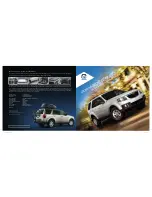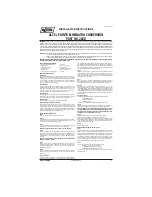
Customer information
311
Depending on technical equipment
levels, the data stored is as follows:
● system component operating
states (e.g. fill level, tyre
pressure, battery status)
● faults and defects in important
system components (e.g. lights,
brakes)
● system reactions in special
driving situations (e.g. triggering
of an airbag, actuation of the
stability control systems)
● information on events damaging
the vehicle
● for electric vehicles the amount of
charge in the high-voltage
battery, estimated range
In special cases (e.g. if the vehicle
has detected a malfunction), it may be
necessary to save data that would
otherwise just be volatile.
When you use services (e.g. repairs,
maintenance), the operating data
saved can be read together with the
vehicle identification number and
used where necessary. Staff working
for the service network (e.g. garages,
manufacturers) or third parties (e.g.
breakdown services) can read the
data from the vehicle. The same
applies to warranty work and quality
assurance measures.
Data is generally read via the OBD
(On-Board Diagnostics) port
prescribed by law in the vehicle. The
operating data read documents the
technical condition of the vehicle or
individual components and assists
with fault diagnosis, compliance with
warranty obligations and quality
improvement. This data, in particular
information on component stress,
technical events, operator errors and
other faults, is transmitted to the
manufacturer where appropriate,
together with the vehicle identification
number. The manufacturer is also
subject to product liability. The
manufacturer potentially also uses
operating data from vehicles for
product recalls. This data can also be
used to check customer warranty and
guarantee claims.
Fault memories in the vehicle can be
reset by a service company when
carrying out servicing or repairs or at
your request.
Comfort and infotainment
functions
Comfort settings and custom settings
can be stored in the vehicle and
changed or reset at any time.
Depending on the equipment level in
question, these include
● seat and steering wheel position
settings
● chassis and air conditioning
settings
● custom settings such as interior
lighting
You can input your own data in the
infotainment functions for your
vehicle as part of the selected
features.
Depending on the equipment level in
question, these include
● multimedia data such as music,
videos or photos for playback in
an integrated multimedia system
● address book data for use with an
integrated hands-free system or
an integrated navigation system
Summary of Contents for CORSA
Page 1: ......
Page 2: ......
Page 4: ...2 Introduction Introduction...
Page 7: ...Introduction 5...
Page 54: ...52 Instruments and controls Instrument panel overview...
Page 96: ...94 Infotainment system Multimedia Navi Pro Control panel Multimedia Navi Pro...
Page 98: ...96 Infotainment system Multimedia Navi Pro Control panel Multimedia Navi...
Page 134: ...132 Infotainment system Multimedia Control panel Multimedia...









































